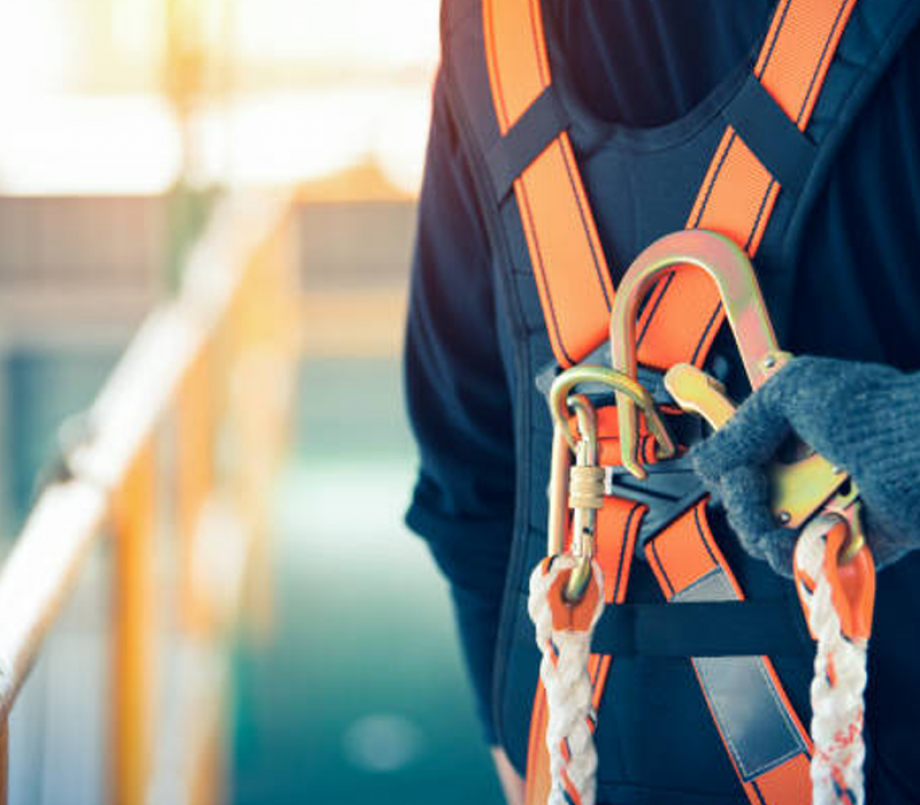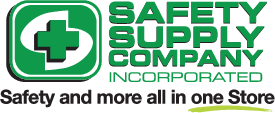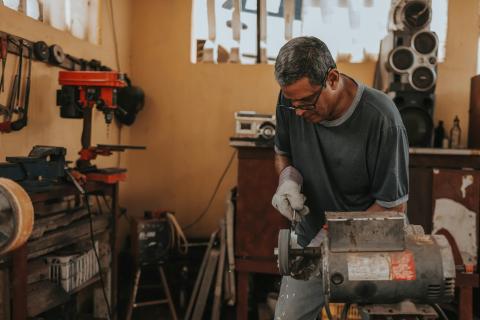Don’t Just Look…Touch!! - Conducting a Safety Inspection on a Climbing Harness

For persons who work at height, safety is not just a word – it is an imperative to protect your life. Therefore, regular inspection of your safety harness is essential.
Before every use, your safety harness equipment should undergo a touch and visual examination to ensure there are no issues or weaknesses with the equipment, which could contribute to placing you, the wearer, in danger.
Why do both a tactile (touch) and visual examination?
You may be able to look at your harness and make one determination, however, when you touch it, what you feel may make you think differently. Using both your sight and touch in tandem allows for a detailed examination that optimizes your chances for spotting defects or unusual wear and tear.
Remember - “Mek sure bettah dan cocksure.” i.e. it’s better to verify than to assume – nowhere is this more applicable than ensuring one’s safety while working at height.
How should the inspection be carried out?
Check the safety labels and tags first.
These should contain information such as which class of harness you have, the weight limit allowed and which safety standards your harness meets. If your harness was previously inspected, the date of that inspection should be noted on the ‘inspection grid’ tag. Information regarding the proper care reqiured for the model you are using should also be located in the labels.
It's recommended that you perform the inspection in a well-lit area. This is conducted by holding the straps of your harness and drawing them across the palm of your hand, slowly working your way around the equipment, gently but firmly bending the webbing on both sides to expose any damage to the weave of the fabric.
In some models, there is an “impact indicator” which indicates whether a harness was previously involved in a fall. A harness should not be re-used after the impact of a fall-arrest.
What does this inspection look for?
Other than the obvious, which would be major tears, this safety check seeks to verify the condition of the material, e.g. if there is any frayed material, how soft or loose the material feels, or if there is an excessive hardness or rigidity to the material. and whether any foreign substances or contaminants have seeped into the material, which could compromise the integrity of the equipment.
According to OSHA, some of the defects to look for include:
- Cuts of 1 mm or more at the edges of webbing lanyards (e.g. where the lanyard may have been choke-hitched around steelwork);
- Surface abrasion across the face of the webbing and at the webbing loops, particularly if localized.
- Abrasion at the edges, particularly if localized.
- Damage to stitching (e.g. cuts or abrasion).
- A knot in the lanyard, other than those intended by the manufacturer.
- A chemical attack, which can result in local weakening and softening – often indicated by flaking of the surface. There may also be a change in the color of the fibers.
- Heat or friction damage indicated by fibers with a glazed appearance which may feel harder than surrounding fibers.
- UV-degradation, which is difficult to identify, particularly visually, but there may be some loss of color (if dyed) and a powdery surface.
- Partially deployed energy absorber (e.g. short pull-out of tear webbing).
- Contamination (e.g. with dirt, grit, sand, etc.) which may result in internal or external abrasion.
- Damaged or deformed fittings (e.g. carabiners, screw link connectors, scaffold hooks).
In addition to regular “before use” checks, an in-depth inspection should be conducted on your harness by a competent person other than yourself every six (6) months.
Safety harnesses should be retired if they have been involved in a fall. However, when you should change a harness is determined by factors should as the wear and tear, frequency of use and how it was stored. On average, a harness is usually changed between 3-5 years of light to moderate use with proper care.
If you are looking for high quality and comfortable safety harnesses, the staff at Safety Supply Co. can assist you with finding the right fit for you. Check out our harness products here: https://safetysupplyco.com/shop/climbing-fall-protection/harnesses-body-...
Blog Articles
Check out more articles
Why You Should Service Your Safety Equipment
Safety equipment serves as the frontline defense against workplace hazards, ensuring the well-being of employees and minimizing risks.
View MoreExciting News: We’re transitioning to OBL Barbados Distribution Ltd.
We hope this letter finds you well. We are writing to share an important update about our business that will bring positive changes and enhanced offerings to you.
View MoreBright Lights, Safe Nights: Holiday Fire Prevention Guide
The holiday season is a time of joy and togetherness, often accompanied by decorations, festive lights, and celebratory gatherings.
View More



